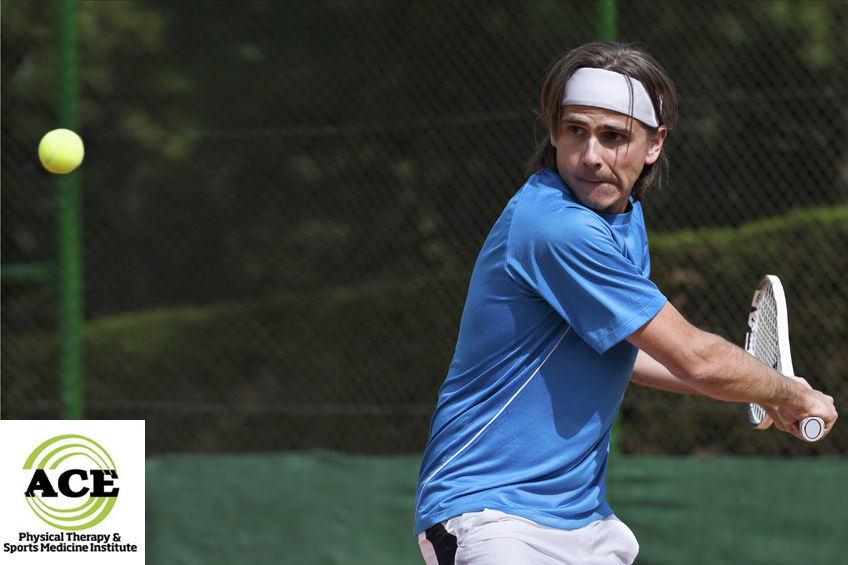TENNIS PREPARATION

Tid Bits of Info
- You can burn up to 600 calories per hour during a vigorous tennis match.
- You should plan to exercise 2-3x per week or more if possible to achieve the desired results.
- Upper extremity injuries suffered by tennis players are usually “over-use” type injuries.
- Lower extremity injuries suffered by tennis players are usually traumatic due to the stop and go nature of the game.
- Seek the advice of a Physical Therapist if you get injured or need a work out to prepare your for tennis.
Tennis players enjoy the physical, mental and social engagement in this dynamic sport. People at every age level, from under 10 to aging adults can enjoy playing tennis and enter in tennis matches and competitions. It is also highly demanding, requiring speed, agility, endurance and sound cardiovascular fitness. If you prepare properly, you can avoid an injury, play well and enjoy the sport. A thorough tennis preparation regimen should be comprehensive and include various drills to help develop the cardiovascular and musculoskeletal systems.
When you play tennis, you engage the whole body. The body works as a whole unit and one part is dependent upon the others to function properly. To train the musculoskeletal system in a manner that would incorporate a series of individual parts and isolate on specific body parts would not be comprehensive or realistic in most instances. The use of whole body exercises is much more effective and can better prepare your body for a vigorous match.
Cardiovascular training should incorporate endurance and sprint type drills. The endurance training will enable the tennis player to perform for a longer duration at a higher level of intensity. The endurance training enhances the person’s ability to utilize oxygen at a more efficient rate for a longer period of time. If the amount of oxygen that is inhaled is utilized more efficiently, the muscles are able to continue to perform their task for a prolonged time. Because tennis is a sport that requires the players to perform short sprints and not prolonged running, the cardiovascular system must be trained in that manner. The short sprints can be performed as a shuttle run and agility runs to accomplish two things at the same time. The person playing tennis must be able to change directions quickly which can be directly related to agility skill level. By performing shuttle runs, side slides (defensive slides) and carioca drills, you can develop agility skills and enhance the cardiovascular system at the same time.
Strength training must include the legs, core and shoulders. These are the primary areas of the body that are placed under a tremendous strain. In order to prepare the body parts for the stresses and strains of tennis, someone cannot just play the game. The additional exercises that utilize some kind of resistance (i.e. rubber tubing, weights) will enable the muscles and joint structures to be able to with stand the rigors of a game of tennis. The legs can be trained with squats, lunges and side walking against a resistance band. The core can be addressed with planks, side planks and “wood choppers”. Lastly the shoulders and arms can be strengthened by performing the “superman” routine, rows with a rubberband or pull aparts, shrugs and lateral raises.
If you have questions regarding the specific exercises to perform you can seek the advice of a Physical Therapist. The visit to the Physical Therapist does not have to be preceded with a visit to your doctor. Physical Therapists are licensed healthcare professionals that are very qualified to evaluate your condition and prescribe a treatment plan or exercise routine that will enable you to be ready to play tennis. Find out more information at the website www.ace-pt.org, and specifically, blog titled “Strength Training for Tennis”.
Tennis is a great game. It can be played for an entire lifetime and if you “get in shape to play the game” and “don’t play the game to get in shape” you will probably be able to play without experiencing an injury.

























